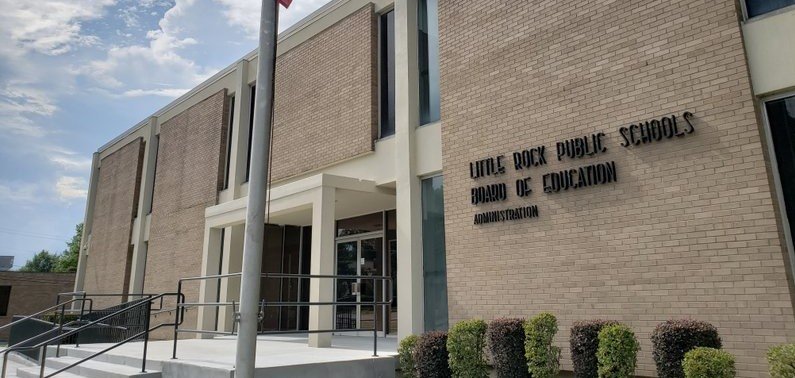Little Rock School Board members Thursday approved changes to election zone boundary lines to equalize populations among the zones before the November 2022 election when all seats will be open.
The School Board, with little discussion, voted unanimously for what is known as Option B of the three zone proposals presented to it by the Arkansas Geographic Information Systems staff.
Shelby Johnson, state Geographic Information Systems officer, told the board earlier this year that adjustments to the election zone boundary lines are necessary because of population shifts that occurred between the 2010 and 2020 U.S. census counts.
Little Rock School District Superintendent Mike Poore recommended that the "B" option be adopted because it provides the greatest equalization among the zone populations of the three plans.
The Option B plan does not place any incumbent board member into the same zone as another incumbent, avoiding the possibility of current board members having to run for reelection against each other.
Board member Norma Johnson made the motion for the zone plan.
In response to questions from board member Ali Noland, Poore said Thursday that there had been no comments from the public about the proposed changes other than one several weeks ago asking that a majority Hispanic zone be considered. As a result of the way the Hispanic population is spread out in the city, an effort to produce a zone with a greater than 50% Hispanic population did not work.
The Option B plan will now be forwarded to the Pulaski County Election Commission for what is typically routine approval, Poore said.
The new election zones come after the district's current election zones were drawn based on the 2010 census numbers and used only once -- in the November and December 2020 board elections. Nineteen people ran for the nine open seats in 2020, with some candidates spending tens of thousands of dollars to be elected to the unpaid positions.
Subsequently, the elected board has received training from outside consultants on how to operate as a board.
The 2020 elections were the first in the district since September 2014. The state took control of the district in January 2015 and dismissed what was then a seven-member board because six of the district's schools were in academic distress based on chronically low state test scores.
In drawing election zones based on the 2020 census, the Arkansas Geographic Information Systems staff sought a population of 20,121 individuals per each of the nine zones.
In the newly approved Option B plan, the variance is 1.66%.
The populations in the nine zones range from 19,958 in Zone 9 in northwest Little Rock -- 163 people under the target population -- to 20,292 in Zone 3 , which is 171 people over the target. Zone 3 encompasses a portion of central Little Rock.
Five of the nine zones have a majority Black population: Zones 1, 2, 3, 6 and 7.
Four zones have a majority white population: Zones 4, 5, 8 and 9.
Zone 2 has the greatest Hispanic population at 32.32%.
Another of the three proposed election zone boundary plans, referred to as Option A, was drawn to minimize boundary line changes as much as possible, and an Option C plan was drawn to avoid the existing split of Cammack Village between two election zones. The C option also made Zone 6 in central Little Rock more compact than the current boundary lines or the lines in the other options.
The A plan had the greater population variance at 5.44%. The option C plan had a 1.74% variance.
In the newly approved B plan, the existing zones are largely intact, Arkansas Geographic Systems staff told the School Board earlier.
